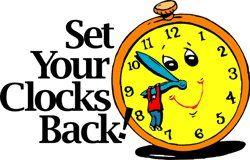
There's no need to hit the snooze button on Nov. 2, because the end of daylight saving time will give you that extra hour of sleep you've been craving -- if you live in an area that observes the time change, that is.
Clocks will fall back to standard time Sunday at 2 a.m. Smartphones with automatic date and time settings will make the change for users; but people with analog clocks and watches will have to manually set their timepieces back an hour. (We suggest making the adjustment before bed on Saturday night.)
Daylight saving time is different for the Northern and Southern Hemispheres. While the Northern Hemisphere begins daylight saving time between March and April and ends it between September and November, the Southern Hemisphere does the opposite.
While much of the United States observes DST, a few places (Hawaii and most of Arizona, for example) do not. TimeandDate.com has a complete list of geographical locations that observe daylight saving time.
Back in 1784, Benjamin Franklin proposed the concept of daylight saving time, noting the challenge of getting people to rise an hour earlier than they're used to. However, he felt certain that people could adapt to the change. "All the difficulty will be in the first two or three days," he wrote, per Smithsonian Magazine.
In 1966, Congress passed the Uniform Time Act for time-zone boundaries. This standardized daylight saving time practices across the country so they would not affect public transportation schedules.
Over the years, this system of maximizing daylight hours was also touted as a way to conserve resources, particularly during times of war.















